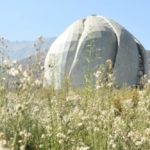 Weird Stuff
Weird Stuff  Weird Stuff
Weird Stuff  Our World
Our World 10 Ways Your Christmas Tree Is More Lit Than You Think
 Movies and TV
Movies and TV The 10 Coolest Stars to Set Sail on The Love Boat
 History
History 10 Things You Didn’t Know About the American National Anthem
 Technology
Technology Top 10 Everyday Tech Buzzwords That Hide a Darker Past
 Humans
Humans 10 Everyday Human Behaviors That Are Actually Survival Instincts
 Animals
Animals 10 Animals That Humiliated and Harmed Historical Leaders
 History
History 10 Most Influential Protests in Modern History
 Creepy
Creepy 10 More Representations of Death from Myth, Legend, and Folktale
 Technology
Technology 10 Scientific Breakthroughs of 2025 That’ll Change Everything
 Weird Stuff
Weird Stuff Ten Bizarre Facts About The Doge Meme
 Our World
Our World 10 Ways Your Christmas Tree Is More Lit Than You Think
 Movies and TV
Movies and TV The 10 Coolest Stars to Set Sail on The Love Boat
Who's Behind Listverse?

Jamie Frater
Head Editor
Jamie founded Listverse due to an insatiable desire to share fascinating, obscure, and bizarre facts. He has been a guest speaker on numerous national radio and television stations and is a five time published author.
More About Us History
History 10 Things You Didn’t Know About the American National Anthem
 Technology
Technology Top 10 Everyday Tech Buzzwords That Hide a Darker Past
 Humans
Humans 10 Everyday Human Behaviors That Are Actually Survival Instincts
 Animals
Animals 10 Animals That Humiliated and Harmed Historical Leaders
 History
History 10 Most Influential Protests in Modern History
 Creepy
Creepy 10 More Representations of Death from Myth, Legend, and Folktale
 Technology
Technology 10 Scientific Breakthroughs of 2025 That’ll Change Everything
10 Creatively Repurposed Historical Buildings
Artists across generations and continents have breathed new life into old buildings while preserving their historical integrity through a process dubbed “adaptive reuse.” Though their architectural features are typically maintained, their purposes often shift dramatically: cathedrals become concert halls, windmills become wineries. This list takes a look at 10 of the weirdest and most wonderfully repurposed buildings.
Related: 10 Amazing Ancient Buildings Still In Use Today
10 From Theatre to Bookstore: El Ateneo Grand Splendid
Book lovers and Broadway nerds, rejoice! Hidden in plain sight on a lively avenue of Barrio Norte, Buenos Aires, is one of the most beautiful bookstores in the world. The building first opened its doors as the Teatro Gran Splendid in 1919, hosting an eclectic array of performers, most famously “King of Tango” Carlos Gardel. Ten years later, the theater underwent its first renovation and became the first cinema to show sound films in Argentina. Upon being threatened with demolition at the turn of the 21st century, the former theater was leased to Grup Ilhsa.
Today, the Grand Splendid’s architectural grandeur has been maintained—or as many may argue, enhanced—to spotlight books instead of performers. El Ateneo Grand Splendid pays homage to its musical legacy, with live piano performances serenading readers as they browse shelves and sip coffee. The frescoed ceilings, sumptuous velvet curtains, and abundant ornamentation of the theater make this bookstore a resplendent escape for bibliophiles, thespians, and architects. [1]
9 From Church to Skatepark: Kaos Temple
What was once a spiritual haven for Christians of Llanera, Spain, has become a colorful sanctuary for skaters. The Church of Santa Barbara was built by architect Manuel del Busto in 1912 but soon found itself deserted. After being abandoned for almost a century, the space was reprised in 2007 by the Church Brigade, a collective that transformed the former church into an indoor skatepark.
In 2015, Spanish artist Okuda San Miguel was commissioned through a crowdfunding campaign to paint the church in his distinctive geometric style. Today, bold colors and kaleidoscopic depictions of humans, animals, and nature ornament the building’s original domed ceilings and walls. Where once were pews are now halfpipes and ramps to provide indoor refuge to skateboarders in one of Spain’s rainiest regions. The original façade of the Church of Santa Barbara remains, housing the skatepark’s interior amalgamation of neo-Gothic detail and vibrant contemporary art. Kaos Temple blends old and new to appeal to artists and athletes alike. [2]
8 From Railway Station to Museum: Musée d’Orsay
Best known for its expansive collection of Impressionist paintings, Paris’s Musée d’Orsay has another peculiar pull: The museum’s foundation initially served as a train station. The 20th-century station’s artfully anachronistic design can be attributed to a collaborative effort between French architects Émile Bénard, Lucien Magne, and Victor Laloux. Located on the Left Bank of the Seine, it was built to transport visitors to the Paris Exposition of 1900.
After being deemed unsuitable for the increasingly mainstream use of longer trains, the building served several purposes beyond the architects’ original intentions. Before the museum’s inauguration in 1986, it was used as a World War II mailing center and set for several popular films, such as Orson Welles’s The Trial. Today, the Musée d’Orsay’s stunning construction and exhibits by Monet and Renoir have made it one of the world’s most popular museums, with well over a million annual visitors.[3]
7 From Grain Silo to Rock Climbing Gym: Upper Limits Rock Gym
Bloomington, Illinois, hosts the perfect outing for athletes and agricultural enthusiasts: cylindrical rock climbing walls inside 65-foot-tall (20-meter) grain silos. They transformed the abandoned set of four silos to develop an experience that is both unique and sustainable. Utilizing the foundation of the previously deserted structures, the gym is powered by solar panels. In addition to the interior climbing walls, routes have been added to the 115-foot-tall (35-meter) exterior.
Once a giant in the global grain market, rural Illinois’s skyline is still dotted with silos and grain bins. Rock climbing is just one of several unusual purposes the state’s renovated silos serve. Originally a grain bin in Alvin, IL, the Has Bin Guest House has been converted into a charming bed and breakfast. Meridian Nursery similarly repurposed a Rockford silo to host intimate events in a nontraditional rustic setting.[4]
6 From Cathedral to Bookstore: Boekhandel Selexyz Dominicanen
This 13th-century Catholic cathedral in Maastricht, Netherlands, was repurposed several times over the past seven centuries before settling on the sprawling bookstore it hosts today. After being consecrated in 1294, the building served as a religious sanctuary for half a millennium. Following the 1794 invasion of the Netherlands, however, the gothic church’s cavernous interior appealed to French dictator Napoleon Bonaparte as a strategic—if excessively ornate—storage space. In more recent history, the cathedral was used for bike storage.
In 2005, the building was transformed by Dutch architects Merkx and Girod into a massive bookstore, its grand architecture and lavish interior design capitalized upon to draw lovers of history, art, and stories to its shelves. Now featuring three stories of bookshelves and walkways underneath stunningly preserved frescoes, the renovated church earned the 2007 Lensvelt de Architect Interior Prize and remains a popular destination for today’s locals and literary tourists.[5]
5 From Jail to Luxury Hotel: The Liberty Hotel
Dark tourists who find themselves in Boston, Massachusetts, can spend a night in what used to be the storied Charles Street Jail. Constructed in 1851 according to the controversial Auburn penal system, the county jail once housed such inmates as activist Malcolm X and anarchists Sacco and Vanzetti. The overcrowded prison closed after almost a century and a half, but its rich history and charming architecture found a second life in The Liberty Hotel.
The ironically named Liberty Hotel opened in 2007, featuring almost 300 guest rooms alongside the original central rotunda. Guests can dine surrounded by portraits of prisoners at the aptly titled Clink and Alibi restaurants or take a walk in the former prison yard. Curiously, Boston’s Liberty Hotel is just one of several prisons transformed into hotels. Those interested in jail hopping can stay overnight in the former Het Arresthuis jail outside Amsterdam or at a Turkish Four Seasons housed in the former Sultanahmet Prison.[6]
4 From Bullring to Hotel: Hotel Quinta Real Zacatecas
If the macabre history of Boston’s Liberty Hotel doesn’t strike your fancy, consider traveling to Zacatecas, Mexico, to spend the night in this 19th-century bullring-turned-hotel. Quinta Real Zacatecas hotel was constructed within the 1866 San Pedro bullfighting arena, also known as the Plaza de Toros, which hosted the sport for well over a century. In 1989, fourteen years after the Plaza’s final bullfight, the Quinta Real opened its doors.
Today’s visitors can appreciate the hotel’s preserved Spanish Colonial façade from the courtyard where the bullring once stood. And if your hankering to explore uniquely repurposed buildings hasn’t yet been satisfied, a ten-minute drive will take you to Museo Rafael Coronel. In one of the more niche renovations of historic religious buildings, this museum, housed in the former San Francisco convent, features more than 5,000 Mexican masks.[7]
3 From Shopping Mall to College: Austin Community College’s Highland Campus
Central Texas students flock to Austin to live and learn within the walls of the former Highland Mall. Once anchored by a JCPenney store, the building is now characterized by its sustainable and tech-based approach to higher education. In a $46 million renovation effort, the 32,000-square-foot (2,973-square- meter) mall property has been transformed to accommodate nursing skills labs, kitchens, a television studio, and other modern facilities for hands-on education.
ACC’s newest campus champions a distinct suburban charm in its maintenance of quintessential mall features and the less traditional banana split sculpture marking the former food court.
The Highland Campus has bolstered the local economy and community by drawing young professionals to the campus’s surrounding area, which, paired with its sustainable design, makes it a compelling choice for the next generation of college applicants.[8]
2 From Grain Silo to Museum: Zeitz Museum of Contemporary African Art
With their domineering form and non-malleable construction, grain silos seem to lend themselves less to adaptive reuse than many of the other repurposed structures on this list. Yet, from climbing walls to galleries, these agricultural hallmarks have been transformed into a number of cultural institutions, with one of the most successful being the Zeitz Museum of Contemporary African Art (MOCAA).
The early 20th-century silos in Capetown, South Africa, were repurposed in 2014 by Heatherwick Studio to house the public, not-for-profit museum. The Zeitz MOCAA exhibits and preserves both temporary and permanent collections of contemporary art from the African continent and diaspora. The building, built upon a foundation of 42 hollowed-out silos, is a work of art in itself—one that, paired with its storied interior, has made the MOCAA the most visited art museum in Africa.[9]
1 From Film Set to Theme Park: Popeye Village
This final list item transcends a singular building’s transformation. Built for the 1980 musical comedy Popeye, starring Robin Williams and Shelley Duvall, this former film set has been repurposed as an amusement park. The Maltese village, inspired by the fictional hamlet of Sweethaven, comprised 19 wooden buildings which served as the stomping grounds for the live-action Popeye and Olive Oyl. Following Popeye’s lukewarm media response, the set was abandoned.
Rather than letting the prop village succumb to nature, local entrepreneurs converted the neglected set into a theme park, maintaining the colorful architecture to house water trampolines, restaurants, and a winery, among other attractions. Actors still walk the streets of Sweethaven as the comic book and cartoon characters, but for tourists and comic enthusiasts instead of the camera. Whether you have an appreciation for salvaged infrastructure or simply a soft spot for cartoon sailors, Popeye Village belongs on your Malta itinerary.[10]








